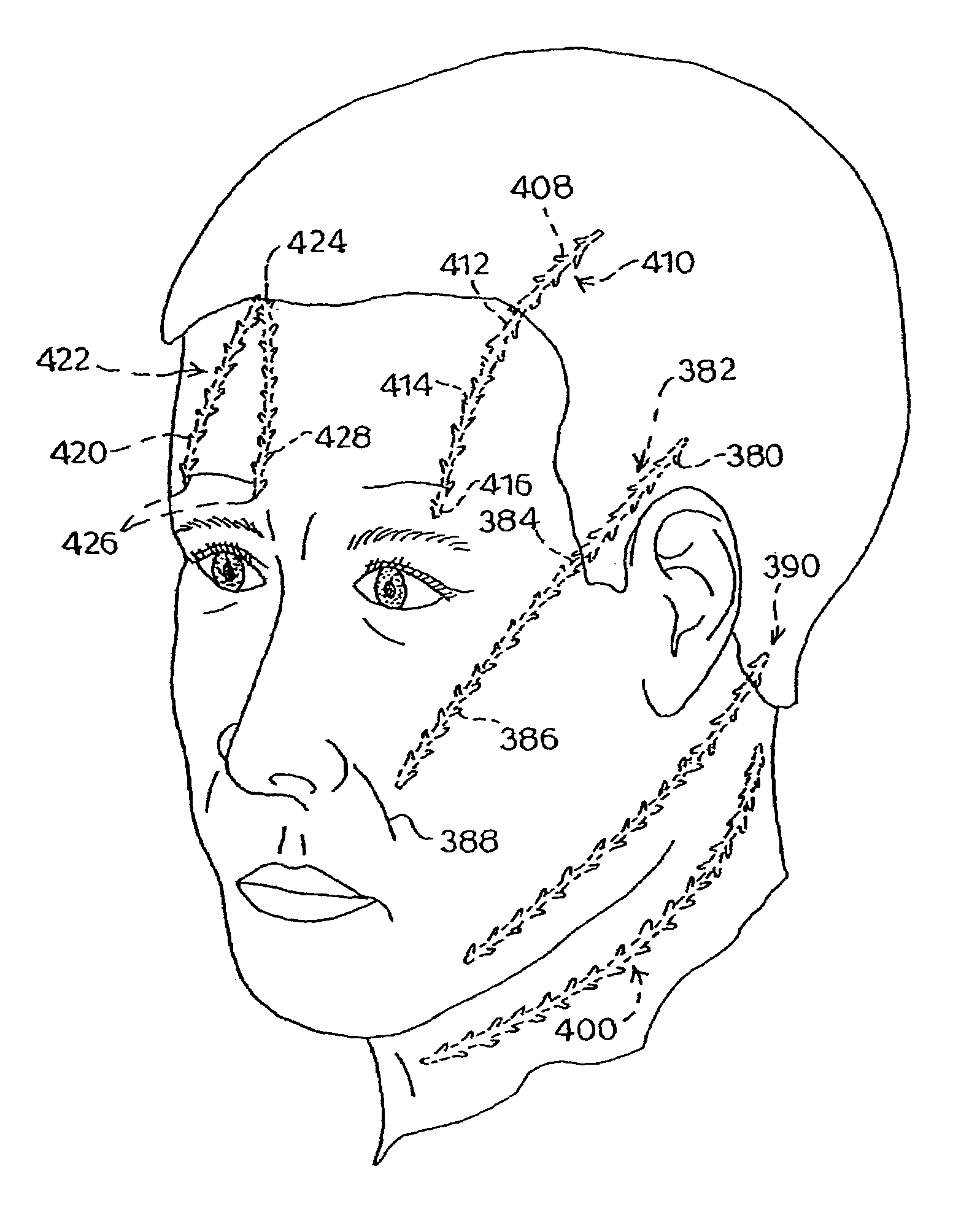Suture method
a suture and body technology, applied in the field of surgical suturing methods, can solve the problems of increasing scarring, time-consuming suturing, and loop sutures leaving scars where they penetrate the skin,
- Summary
- Abstract
- Description
- Claims
- Application Information
AI Technical Summary
Benefits of technology
Problems solved by technology
Method used
Image
Examples
example 1
[0135]A straight incision wound, about 1.5 cm deep, was created in each of four samples of cadaveric porcine skin tissue. The tissue samples measured 4 cm by 10 cm. Each incision was centered on the skin sample so that the wound was 4 cm long from end to end.
[0136]Each wound was closed according to a different suture method using identical barbed sutures made from monofilament PDS (polydioxanone) size 0. One wound was closed according to the method shown in U.S. Pat. Nos. 5,342,376 and 6,241,747, without using the inserting device (the Ruff method). Seven sutures were placed along the length of the wound and running generally perpendicularly to the faces of the wound. When placed, the sutures dipped below the incision line thus engaging subcutaneous tissue below the incision and the ends of the sutures engaged some dermis. A second wound was closed using seven needle-tipped sutures placed along the length of the wound in the dermis and running generally perpendicularly to the faces ...
example 2
[0139]Seven incisions were made at various locations on each of three dogs. The length of the incisions ranged from ½ inch to 4 inches and the depth of the incisions from the dermis to the muscular level. The incisions were closed with barbed sutures made from monofilament PDS (polydioxanone) size 0 and conventional sutures' according to the following scheme with the locations randomized:
[0140]
TABLE 2Barbed SutureTissue LevelMethodConventional Suture MethodDermisAlpha, ZigzagSimple interrupted loop stitches [2–0nylon, 2–0 silk]SubcuticularCorkscrewSimple continuous loop stitches [3–0PDS]SubcutaneousCorkscrewSimple continuous loop stitches [3–0PDS]MuscularCorkscrewSimple continuous loop stitches [3–0PDS]
[0141]More than one alpha-shaped stitch was used for longer incisions.
[0142]The dogs were housed for two weeks. Daily clinical and necropsy observations were performed on all surgical sites. With the exception that three of six sites closed by nylon sutures had some sutures chewed out...
PUM
 Login to View More
Login to View More Abstract
Description
Claims
Application Information
 Login to View More
Login to View More - R&D
- Intellectual Property
- Life Sciences
- Materials
- Tech Scout
- Unparalleled Data Quality
- Higher Quality Content
- 60% Fewer Hallucinations
Browse by: Latest US Patents, China's latest patents, Technical Efficacy Thesaurus, Application Domain, Technology Topic, Popular Technical Reports.
© 2025 PatSnap. All rights reserved.Legal|Privacy policy|Modern Slavery Act Transparency Statement|Sitemap|About US| Contact US: help@patsnap.com



